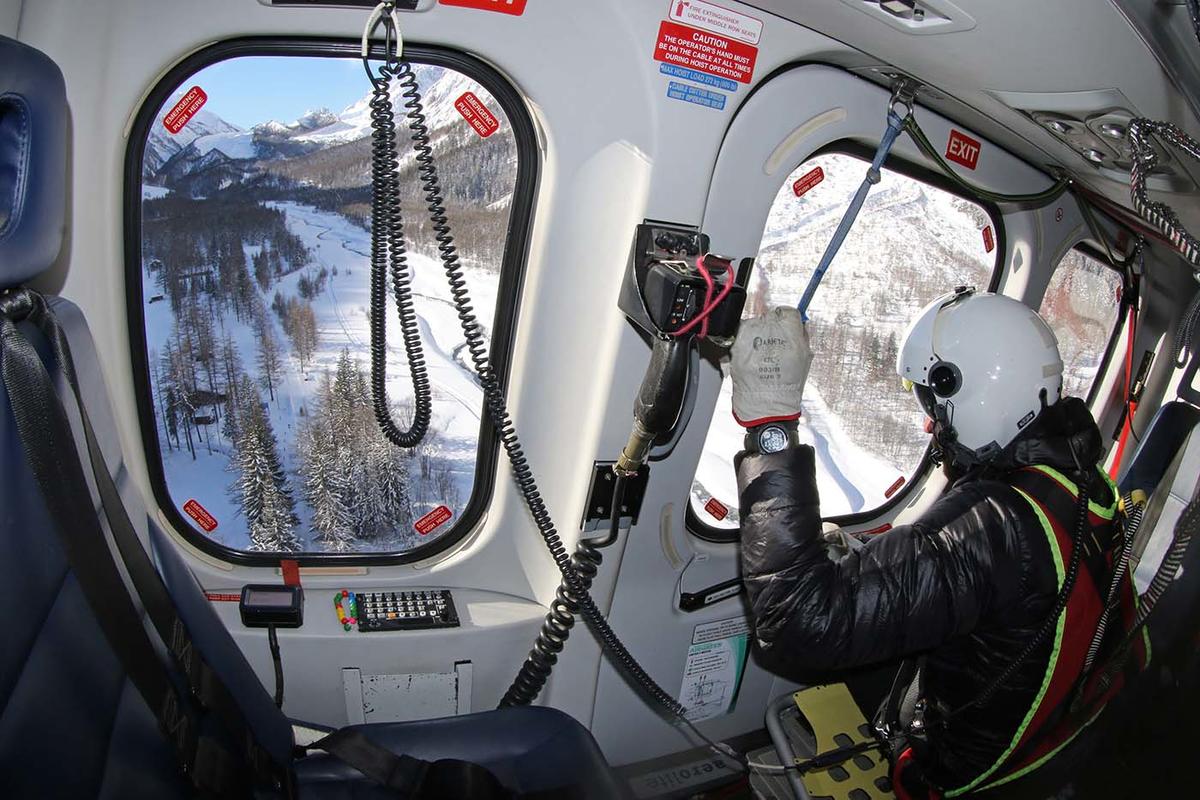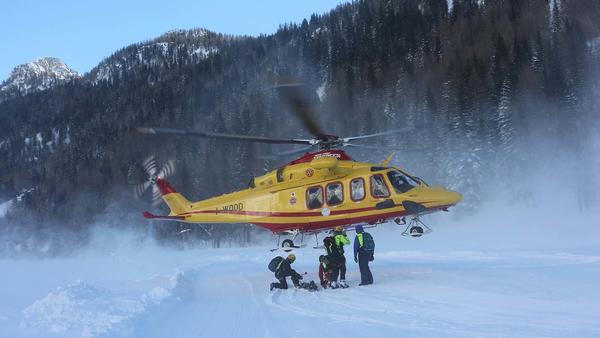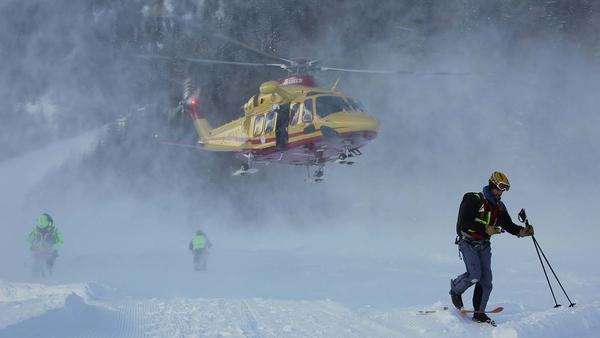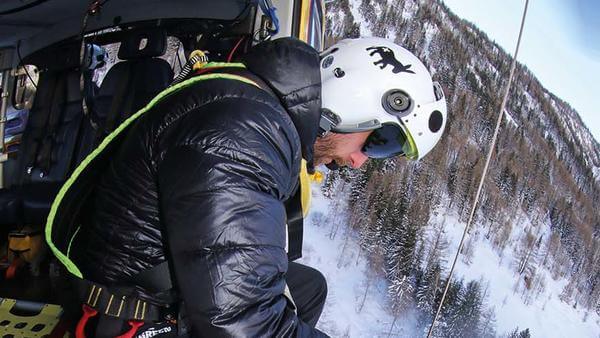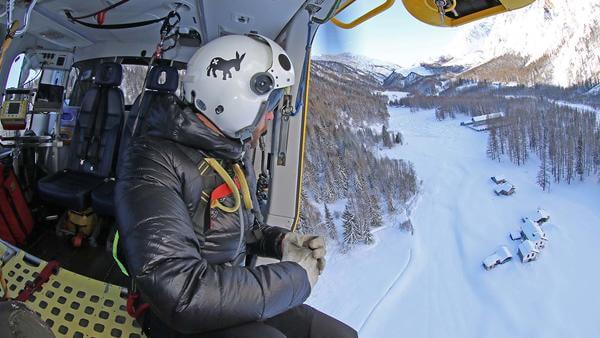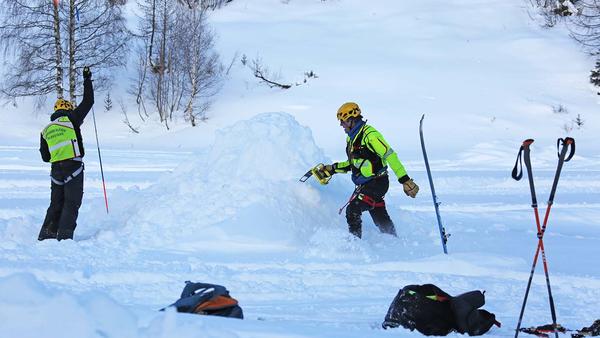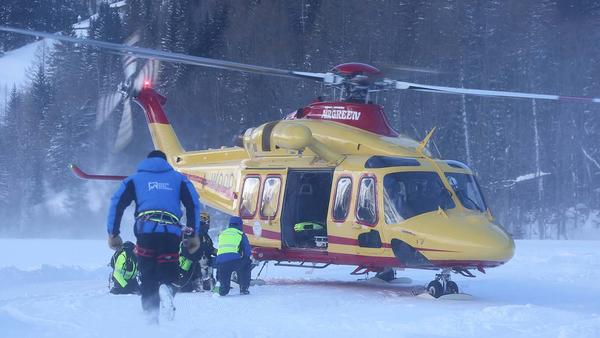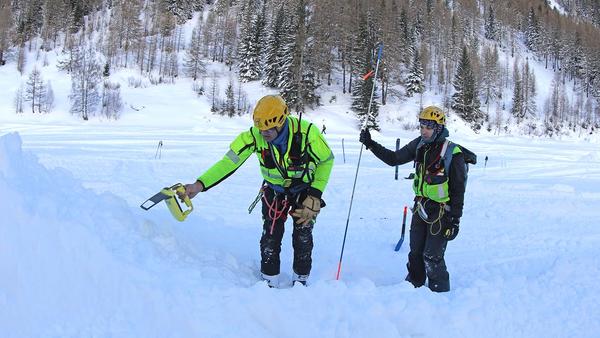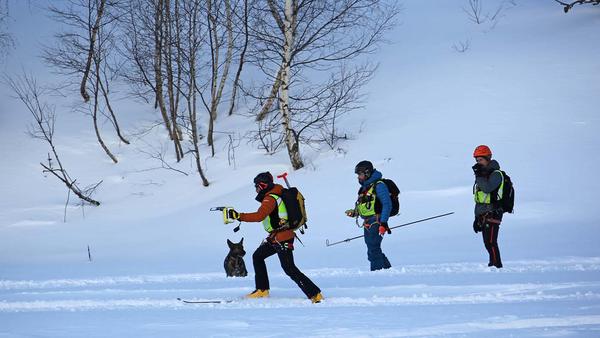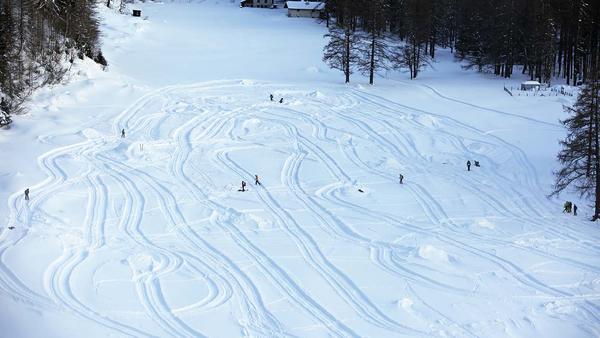Gallery: Avalanche training

Dino Marcellino photographs and reports on the avalanche training of the Soccorso Alpino Valdostano (Aosta Valley Mountain Rescue) in the Italian Alps
Mountain training
For someone trapped in an avalanche, every moment counts. Rescue within the first 18 minutes means a 93 per cent chance of survival; after 36 minutes, the survival rate drops to 30 per cent. If no-one is on site to help, a rescue helicopter is the fastest and best resource.
In the Valle d’Aosta mountain region of the Italian Alps, the local Soccorso Alpino Valdostano (Aosta Valley Mountain Rescue) and regional helicopter emergency medical services (HEMS) train regularly for avalanche emergencies.
All the HEMS crew (40 mountain rescuers qualified to work with helicopters, medical staff, pilots and hoist operators) have to participate in six scheduled training days per year, one of which is dedicated to avalanche rescue.
On this day, the helicopter is a Leonardo AW139, operated by Airgreen – a fast aircraft, capable of reaching the farthest points of the region in just 15 minutes.
Once at the avalanche site, it is possible to carry out an initial assessment of the situation from aboard the helicopter. The AW139 lands on the edge of the avalanche, where two mountain rescuers, a doctor and the canine unit disembark. One rescuer acts as leader, requesting support teams if necessary, to be transported to the site by the same helicopter.
All rescue team members are equipped with appropriate search tools, such as ARTVA and RECCO systems.
The team are trained in the best techniques for probing and shovelling snow. The helicopter is equipped with an ARTVA antenna, whereby the first signal is searched by flying over the avalanche, in a designated to generate a grid, methodically covering all points on the ground.
A real mission
Just two days after the training day, the HEMS team was engaged in a real-time event: 22 minutes from the call, rescuers managed to reach and extract the injured person from the snow.
Avalanche awareness
Helicopters may not always be able to intervene, either due to adverse weather conditions or being engaged in another mission.
Therefore, when planning an excursion in a snowy mountain environment, it is necessary to adopt a precautionary approach, to minimise the risks of being caught in an avalanche: never go alone, consult snow and avalanche reports, know when to abandon the excursion if you have doubts, equip yourself with a self-rescue kit – a transceiver, shovel and probe – and check that all items are fit-for-purpose and functional.
